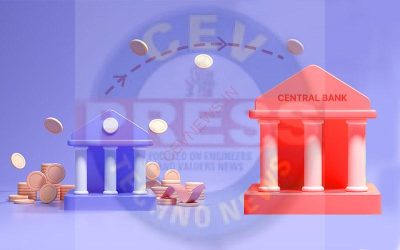CONCEPT OF REPO RATE- ALL YOU NEED TO KNOW
Repo Rate
Repo rate is the rate of interest at which commercial banks borrow money from the central bank i.e. Reserve bank of India (RBI). In the case of inflation, RBI increases the repo rate, and in the case of deflation decreases it. RBI increases the repo rate to remove the excess supply of the money out of the market. Reverse repo rate is the rate of interest at which commercial banks keep their deposit with the central bank.
Repo rate is the repurchasing option rate at which commercial banks borrow money, overnight, from the central bank, i.e. Reserve Bank of India or RBI. RBI also uses the repo rate to regulate inflation.
The Reserve Bank of India (RBI) announced on 7th December 2022, that the Monetary Policy Committee (MPC) of the Reserve Bank of India (RBI) raised the repo rate by 35 basis points (bps) to 6.25%. The repo rate is the interest rate at which the central bank of the country lends money to the recognized commercial bank to achieve several fiscal goals for the economy. The term ‘REPO’ denotes the repurchase option or agreement. Used as a tool in the financial market, it facilitates borrowings through collateral of specific debt instruments in the economy.
How Does Repo Rate Work
When you borrow money from the bank, the transaction attracts interest on the principal amount. This is referred to as the cost of credit. Similarly, banks also borrow money from RBI during a cash crunch on which they are required to pay interest to the Central Bank. This interest rate is called the repo rate.
Technically, repo stands for ‘Repurchasing Option’ or ‘Repurchase Agreement’. It is an agreement in which banks provide eligible securities such as Treasury Bills to the RBI while availing overnight loans. An agreement to repurchase them at a predetermined price will also be in place. Thus, the bank gets the cash and the central bank the security.
Current Repo Rate in India
In September 2022, the Monetary Policy Committee (MPC) stated that the repo rate had been raised by 50 basis points to 5.90%. During its meeting, the MPC agreed to maintain the reverse repo rate at 3.35%. The Bank Rate and also the marginal standing facility rate have been changed to 5.15%.
Reserve Bank of India Repo Rate
| Repo Rate | 5.90% |
| Reverse Repo Rate | 3.35% |
| Bank Rate | 5.15% |
| Marginal Standing Facility Rate | 5.15% |
Calculation of Repo Rate by the Reserve Bank of India
The RBI regulates the repo rate based on the economic situation, as described in the previous paragraph. The central bank determines interest rates based on inflation or recession in the country’s market.
Impact of When Repo Rate Increase
With an increase in repo rate, the cost of credit increases for commercial banks, thus making loans expensive for them. It limits their capacity to borrow and also prompts them to increase the rate of interest offered to retail borrowers for various loans and advances. As bank loans become expensive for customers, it discourages them from borrowing more. It results in an overall decrease in money supply to the market, impacting the liquidity. A decreased availability of money tends to contain inflation. It is the primary reason why the RBI resorts to increasing this rate during periods of high inflation. Similar to repo rates, another market instrument RBI uses to control and regulate the money market is reverse repo rate. It is a rate at which commercial lending organisations deposit their surplus cash to the RBI and earn interest. Unlike repo rates, these rates carry an inverse relationship with the economy’s money supply.

